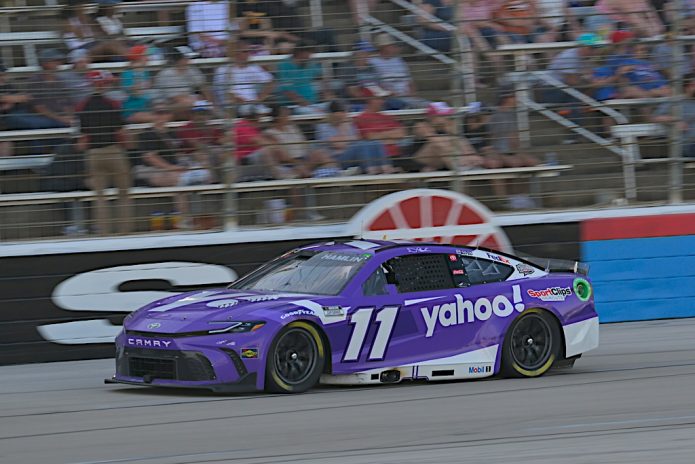Toyota is a name that is synonymous with quality, reliability, and innovation in the world of automobiles. Over the years, the Japanese car manufacturer has cemented its position as a leader in the industry, with a strong focus on performance and efficiency. One of the areas where Toyota has excelled is in the realm of racing cars, particularly in the highly competitive world of motorsports. In recent years, Toyota has made significant strides in developing aerodynamic features for their racing cars, to increase speed, stability, and overall performance on the track.
In this article, we will delve into the aerodynamic features of Toyota racing cars, exploring the cutting-edge technology and engineering that goes into creating these high-performance vehicles. We will also examine the impact of these features on Toyota’s success in the world of motorsports and how they have translated into their production car models. If you’re interested in experiencing these innovations firsthand, a visit to the Toyota dealership Fort Wayne can provide you with a closer look at the latest models that benefit from Toyota’s racing expertise.
Streamlined design for maximum speed:
Toyota racing cars are renowned for their streamlined design, carefully engineered to maximize speed and performance on the race track. Every curve and contour of the vehicle’s body is meticulously crafted to minimize drag and optimize aerodynamics. The sleek exterior not only enhances the visual appeal of the racing car but also plays a crucial role in reducing air resistance and increasing overall speed. Through extensive wind tunnel testing and computational fluid dynamics simulations, Toyota engineers have fine-tuned the design to ensure minimal air turbulence and maximum efficiency.
From the front grille to the rear spoiler, every component is strategically placed to channel the airflow smoothly, allowing the racing car to slice through the air effortlessly. This relentless pursuit of aerodynamic perfection is what sets Toyota racing cars apart, delivering a competitive edge on the track and showcasing the brand’s commitment to pushing the boundaries of speed and performance.
Utilizing wind tunnel technology:
The utilization of wind tunnel technology has revolutionized the development of aerodynamic features in Toyota racing cars. By subjecting prototype models to controlled airflow conditions, engineers can measure and analyze the forces acting on the vehicle and make precise adjustments to enhance its performance. These state-of-the-art wind tunnels provide a controlled environment where variables such as airspeed, turbulence, and yaw angles can be manipulated to simulate real-world racing conditions.
With the data collected from these tests, engineers can optimize the shape and positioning of various components, such as the front splitter, side skirts, and rear diffuser, to generate maximum downforce and reduce drag. This meticulous attention to detail and reliance on wind tunnel technology ensures that Toyota racing cars are finely tuned for optimal aerodynamic efficiency, ultimately translating into improved lap times and a competitive advantage on the race track.
Precision in every aerodynamic detail:
Every aspect of aerodynamics in Toyota racing cars is approached with an unwavering commitment to precision. From the sleek contours of the bodywork to the smallest air vents strategically placed for optimal airflow, every detail is meticulously designed and tested. The engineers leave no stone unturned in their pursuit of maximizing aerodynamic efficiency.
Through advanced computational fluid dynamics simulations and extensive wind tunnel testing, the team fine-tunes every curve and surface to minimize drag and generate downforce, ensuring that the car slices through the air with utmost precision. The result is a harmonious integration of form and function, where every aerodynamic feature is purposefully crafted to deliver the utmost performance on the race track.
Enhancing stability and cornering ability:
To further enhance the stability and cornering ability of Toyota racing cars, a combination of aerodynamic features is implemented. Firstly, a carefully designed front splitter is incorporated to effectively manage the airflow underneath the car. This creates a low-pressure zone, effectively sucking the car closer to the ground and increasing traction.
Additionally, side skirts and rear diffusers work in conjunction to optimize the airflow around the car, minimizing turbulence and reducing drag. The rear wing plays a crucial role in generating downforce, pressing the car firmly onto the track, and improving stability during high-speed maneuvers. These aerodynamic enhancements work in unison, allowing Toyota racing cars to maintain exceptional stability and precise cornering ability, giving drivers the confidence to push the limits of performance.
Achieving optimal performance on track:
To achieve optimal performance on the track, drivers must not only rely on the aerodynamic features of Toyota racing cars but also focus on key driving techniques. The ability to maintain consistent and smooth throttle control is essential, as it allows drivers to effectively manage power delivery and maximize traction.
Additionally, mastering the art of braking is crucial, as precise and controlled braking not only enables drivers to approach corners with confidence but also helps in maintaining stability throughout the race.
Furthermore, understanding and utilizing proper racing lines can significantly improve lap times, as it allows drivers to take advantage of the optimal trajectory and minimize unnecessary movements. By combining the advanced aerodynamic features of Toyota racing cars with skilled driving techniques, drivers can truly unlock the full potential of these vehicles on the track.
Final Words:
The aerodynamic features of Toyota racing cars are a crucial element in their performance on the track. Through intensive research and development, Toyota has been able to continually improve and refine these features to maximize speed, handling, and overall efficiency.
Whether it’s the sleek design of the body or the intricate details of the airflow systems, every aspect of aerodynamics is carefully considered and tested to ensure optimal performance. As Toyota continues to dominate the racing world, it’s clear that its commitment to aerodynamics plays a significant role in its success.


